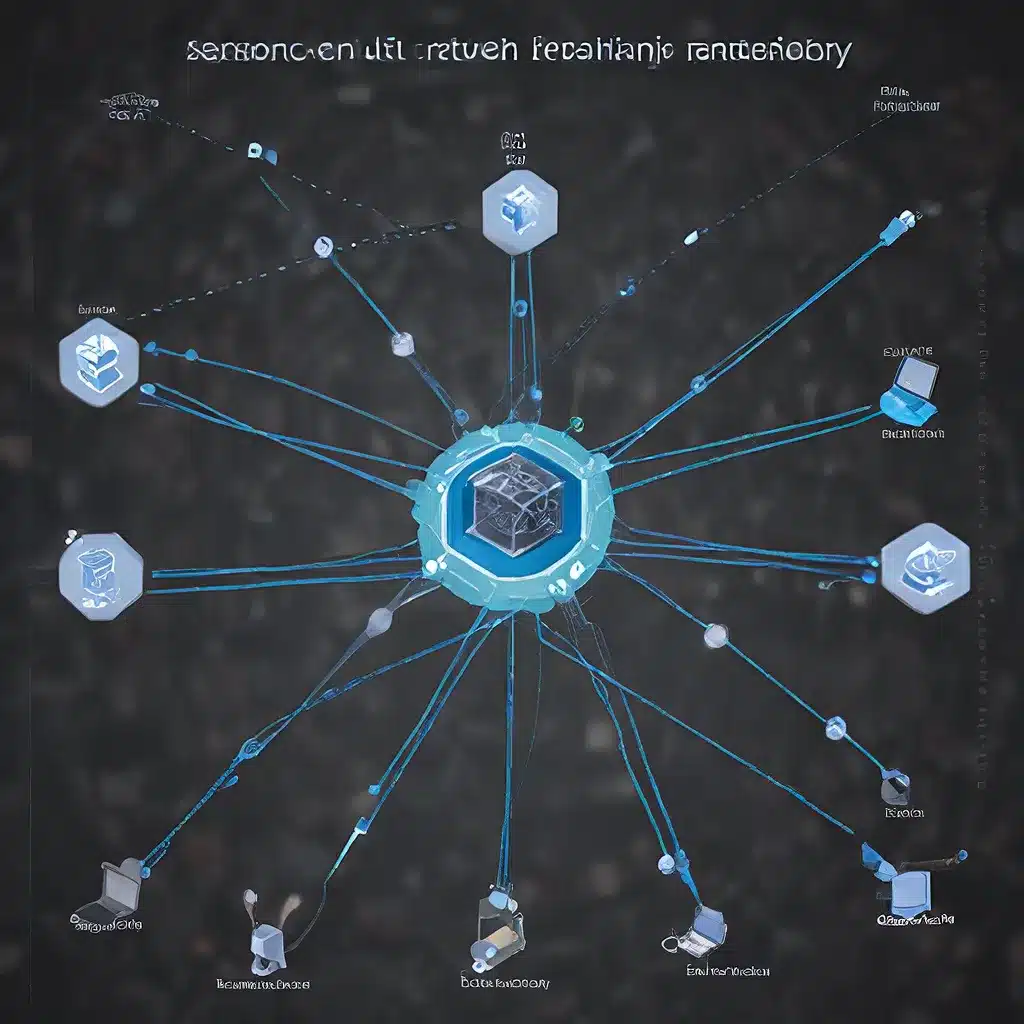
In the ever-evolving digital landscape, where sensor networks and the Internet of Things (IoT) play a pivotal role, the need for robust and resilient systems has never been more paramount. As these technologies permeate every facet of our lives, from smart cities to industrial automation, the demand for uninterrupted service and seamless performance has become a critical imperative. Enter the revolutionary concept of self-healing architectures – the silent guardians of the digital realm, tirelessly safeguarding systems with an invisible hand.
The Rise of Self-Healing Architectures
Self-healing architectures represent a paradigm shift in software design, where systems possess the innate ability to automatically detect, diagnose, and recover from faults or failures without the need for human intervention. This innovative approach embodies resilience in its purest form, seamlessly orchestrating a symphony of automated responses to maintain system integrity and continuity. It is the unsung hero in the technological saga, silently orchestrating a ballet of data algorithms and automation to ensure seamless operations.
At the core of self-healing architectures lies the unwavering commitment to enhance system resilience, reduce downtime, and improve overall reliability. By incorporating mechanisms for automated fault detection, proactive remediation, and dynamic resource allocation, these systems strive to address issues before they escalate into critical failures, minimizing the impact on system performance.
Automated Fault Detection and Proactive Remediation
One of the key pillars of self-healing architectures is the continuous monitoring of system health and performance. Automated tools and algorithms analyze metrics such as CPU usage, memory consumption, network traffic, and application responsiveness in real-time, detecting anomalies, deviations from expected behavior, or signs of potential failures.
Upon detecting a fault or anomaly, self-healing architectures employ proactive remediation techniques to mitigate the impact and prevent further degradation. This may involve automatically triggering predefined actions, such as restarting failed services, reallocating resources, or rerouting traffic to healthy components. The goal is to address issues before they escalate into critical failures, ensuring the system maintains optimal performance under varying conditions.
Dynamic Resource Allocation and Stateful Recovery
Self-healing architectures also excel at dynamic resource allocation, adjusting resource utilization based on workload demands and system health metrics. Automated scaling policies and algorithms dynamically allocate resources, scaling them up or down in response to fluctuating traffic patterns. This ensures optimal performance and efficient resource utilization, even as system requirements fluctuate.
In addition to addressing transient faults, self-healing architectures incorporate mechanisms for stateful recovery to restore system state and data integrity in the event of more serious failures. This may involve techniques such as data replication, distributed consensus protocols, and automated failover mechanisms, ensuring seamless continuity of service and minimal data loss.
Decentralized Decision-Making and Continuous Adaptation
Decentralized decision-making is another hallmark of self-healing architectures. Instead of relying on a centralized controller, individual components or nodes within the system autonomously assess their own health and make localized decisions to maintain overall system stability. This distributed approach enhances system resilience and fault tolerance even in the face of network partitions or communication failures.
Furthermore, self-healing architectures leverage machine learning and adaptive algorithms to continuously learn from past incidents, adapt to changing environments, and optimize system behavior over time. By analyzing historical data and performance metrics, these systems can improve fault prediction, refine remediation strategies, and anticipate future challenges more effectively.
The Impact of Self-Healing Architectures
The impact of self-healing architectures on the sensor network and IoT landscape is profound. These innovative systems are transforming the way we design, deploy, and maintain sensor networks, paving the way for a future of unwavering reliability and resilience.
By automating fault detection, proactive remediation, and dynamic resource allocation, self-healing architectures reduce the burden on human operators, freeing them to focus on higher-level strategic initiatives rather than day-to-day firefighting. This, in turn, enhances the efficiency and responsiveness of sensor network operations, ensuring that critical systems and applications remain uninterrupted.
Moreover, the decentralized decision-making and continuous adaptation capabilities of self-healing architectures make them particularly well-suited for the rapidly evolving IoT landscape. As the number of connected devices and the complexity of sensor network topologies continue to grow, these self-healing systems can adapt to changing conditions, mitigate the impact of failures, and maintain optimal performance without human intervention.
Addressing Challenges and Considerations
While the benefits of self-healing architectures are undeniable, the implementation and deployment of these systems are not without their challenges. Designing effective self-healing mechanisms requires careful consideration of trade-offs, system dependencies, and potential failure scenarios to ensure robustness and stability.
Performance overhead and the complexity of self-healing mechanisms are among the key concerns that must be addressed. Striking the right balance between the effectiveness of self-healing capabilities and the impact on system resources is crucial to maintaining overall system efficiency and responsiveness.
Additionally, the potential for unintended consequences must be thoroughly evaluated. Self-healing systems that are not properly designed and tested may inadvertently introduce new vulnerabilities or create cascading failures. Rigorous testing, simulation, and continuous monitoring are essential to mitigate these risks and ensure the reliability of self-healing architectures.
The Future of Sensor Networks and IoT
As the digital landscape continues to evolve, the demand for resilient, self-healing sensor networks and IoT systems will only grow more pronounced. These innovative architectures represent a significant leap forward in the quest for uninterrupted service and reliable system performance, transforming the way we approach the design, deployment, and maintenance of sensor networks.
By embracing the principles of self-healing, the sensor network and IoT industries can create a future where downtime becomes a relic of the past, and resilience reigns supreme in the ever-evolving digital frontier. As the silent sentinels of the technological age, self-healing architectures will continue to shape the landscape, ensuring that our sensor networks and IoT systems remain steadfast, adaptable, and ready to meet the challenges of tomorrow.